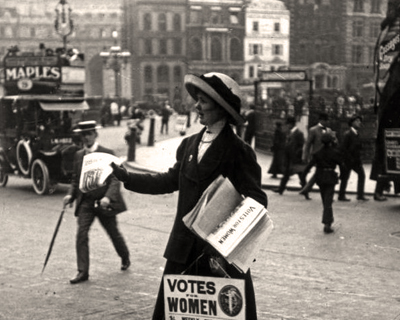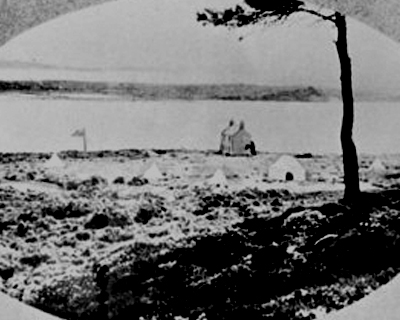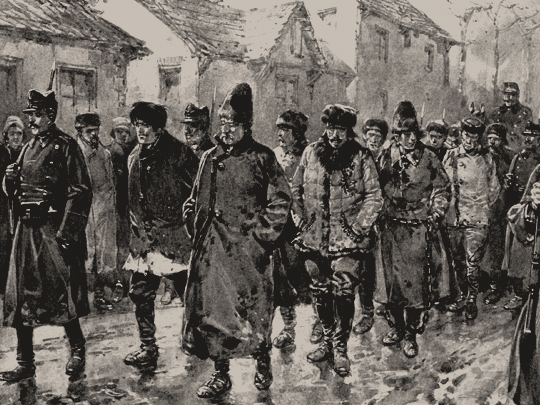Hermanus Willem Koekkoek / Wikimedia Commons / CC-BY-SA-3.0 / GFDL
1 – Romanian peasants revolt
The revolt took place in March 1907 in Moldavia and quickly spread to Wallachia.
The main cause was the discontent of the peasants about the inequity of land ownership, which was in the hands of just a few large landowners.
At that time, peasants formed up to 80% of the population and about 60% of them owned small crops, or no land at all, while the large landowners owned more than half of the arable land.
The revolt began in the village of Flămânzi, due to the landowner’s refusal to renew the leases of the local peasants. The peasants, fearing that they would remain without work and, more importantly, without food, began to act violently.
On March 18th a state of emergency was declared, with 140,000 soldiers being mobilized by March 29th. Thousands of peasants perished and over 10,000 were arrested.
The exact number of deaths or even the course of events is unknown. This is because the government, to hide the size of the massacre, ordered the destruction of all uprising-related documents.
The figure given by Prime Minister Dimitrie Sturdza indicated 421 deaths. Figures given by Austrian diplomats indicate between 3,000-5,000 were killed, while the French Embassy has the death toll ranging between 10,000-20,000.
2 – British suffragettes storm British parliament

The Women’s Social and Political Union, organized a meeting at Caxton Hall in London on February 13th to rally their forces before marching on Parliament. Even before that meeting, the leaders had primed a hardcore group of 200 activists.
In the afternoon meeting the Pankhursts energized their fellow suffragettes, then with Charlotte Despard they led around 400 on a march to Parliament.
At the green outside Westminster Abbey, the massed police ranks tried to stop them, with many scuffles ensuing.
In all, some 60 women were arrested, but 15 managed to reach the lobby of the Houses of Parliament. The disturbance lasted for hours, only ending after 10 pm.
The march of the women should have sent a message to the authorities that reform was inevitable.
However, it would be another 11 years before women were given the vote.
3 – Robert Baden-Powell forms the Boy Scouts

In August 1907, Robert Baden-Powell held a camp on Brownsea Island, southern England, to test out his ideas. About twenty boys attended. Eight from local Boys’ Brigade companies, and about twelve public schoolboys, mostly sons of his friends.
Baden-Powell was influenced by Ernest Thompson Seton, who founded the Woodcraft Indians. Seton gave Baden-Powell a copy of his book The Birch Bark Roll of the Woodcraft Indians.
The first book on the Scout Movement, Baden-Powell’s ‘Scouting for Boys’ was published in six installments in 1908, and has sold approximately 150 million copies as the fourth best-selling book of the 20th century.
Boys and girls spontaneously formed Scout troops and the Scouting Movement had inadvertently started, first as a national, and soon an international phenomenon. The Scouting Movement was to grow up in friendly parallel relations with the Boys’ Brigade.
A rally for all Scouts was held at Crystal Palace in London in 1909, at which Baden-Powell discovered the first Girl Scouts.
The Girl Guide Movement was subsequently formalized in 1910 under the auspices of Baden-Powell’s sister, Agnes Baden-Powell.
Baden-Powell’s friend Juliette Gordon Low was encouraged by him to bring the Movement to the United States, where she founded the Girl Scouts of the USA.
